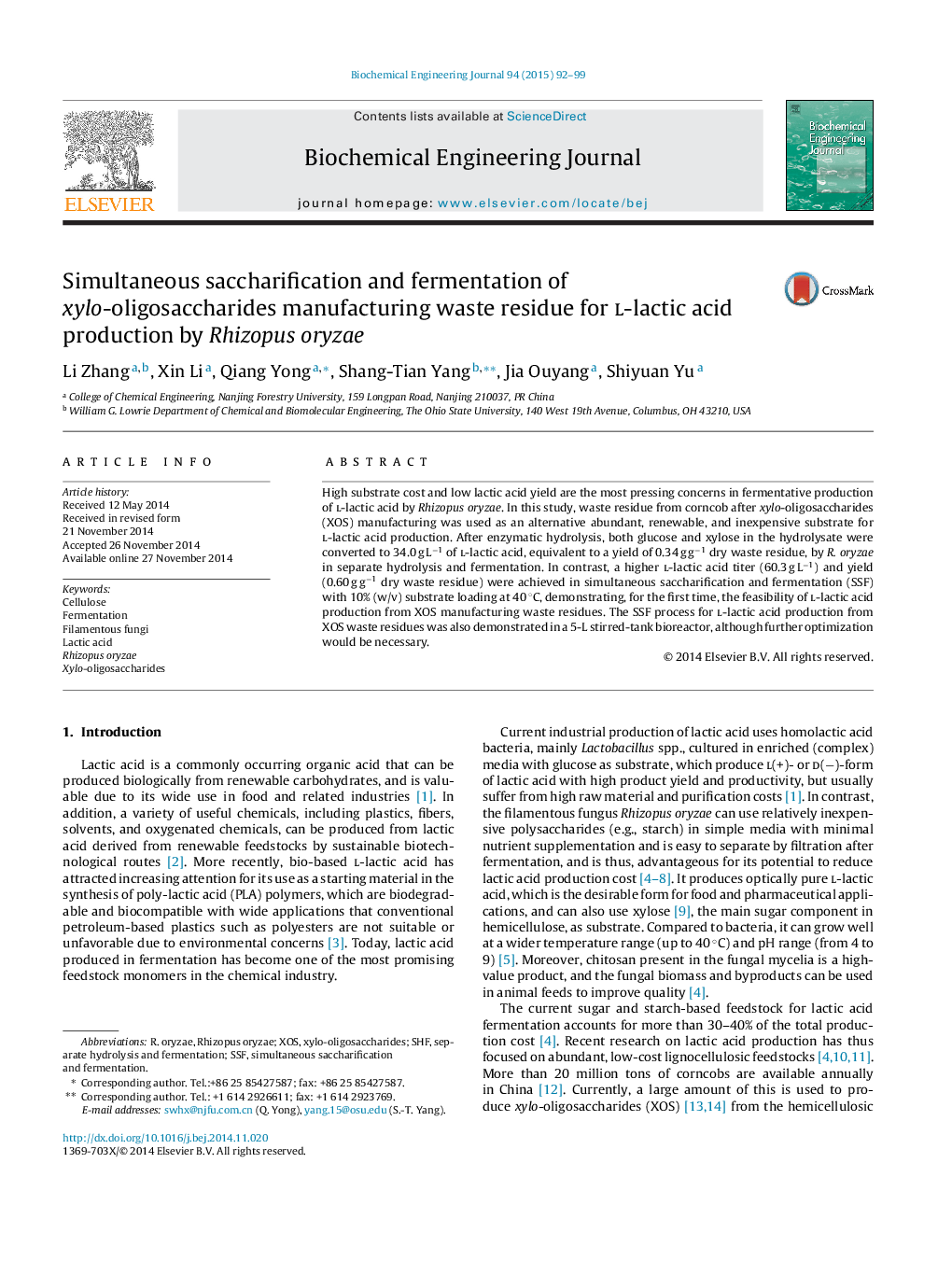| Article ID | Journal | Published Year | Pages | File Type |
|---|---|---|---|---|
| 3042 | Biochemical Engineering Journal | 2015 | 8 Pages |
•Lactic acid production from XOS manufacturing waste by Rhizopus oryzae was investigated.•Enzymatic hydrolysis of the waste gave high yields of glucose (87.1%) and xylose (64.2%).•Separate hydrolysis and fermentation (SHF) and simultaneous saccharification and fermentation (SSF) were studied.•34.0 g/L l-lactic acid with a yield of 0.34 g g−1 dry waste residue was obtained in SHF.•Higher lactic acid titer (60.3 g/L) and yield (0.60 g g−1) were achieved in SSF at 10% (w/v) loading.
High substrate cost and low lactic acid yield are the most pressing concerns in fermentative production of l-lactic acid by Rhizopus oryzae. In this study, waste residue from corncob after xylo-oligosaccharides (XOS) manufacturing was used as an alternative abundant, renewable, and inexpensive substrate for l-lactic acid production. After enzymatic hydrolysis, both glucose and xylose in the hydrolysate were converted to 34.0 g L−1 of l-lactic acid, equivalent to a yield of 0.34 g g−1 dry waste residue, by R. oryzae in separate hydrolysis and fermentation. In contrast, a higher l-lactic acid titer (60.3 g L−1) and yield (0.60 g g−1 dry waste residue) were achieved in simultaneous saccharification and fermentation (SSF) with 10% (w/v) substrate loading at 40 °C, demonstrating, for the first time, the feasibility of l-lactic acid production from XOS manufacturing waste residues. The SSF process for l-lactic acid production from XOS waste residues was also demonstrated in a 5-L stirred-tank bioreactor, although further optimization would be necessary.
